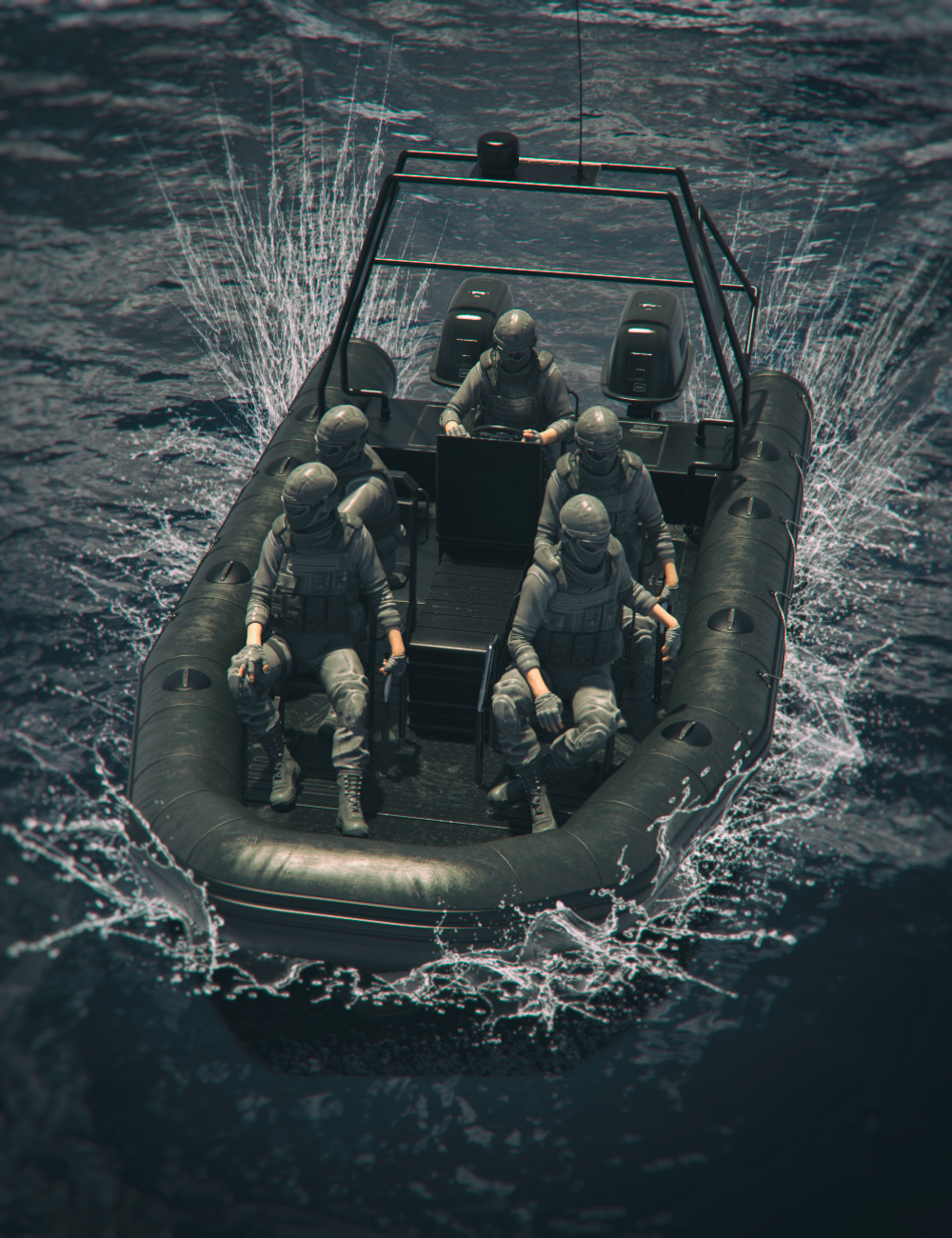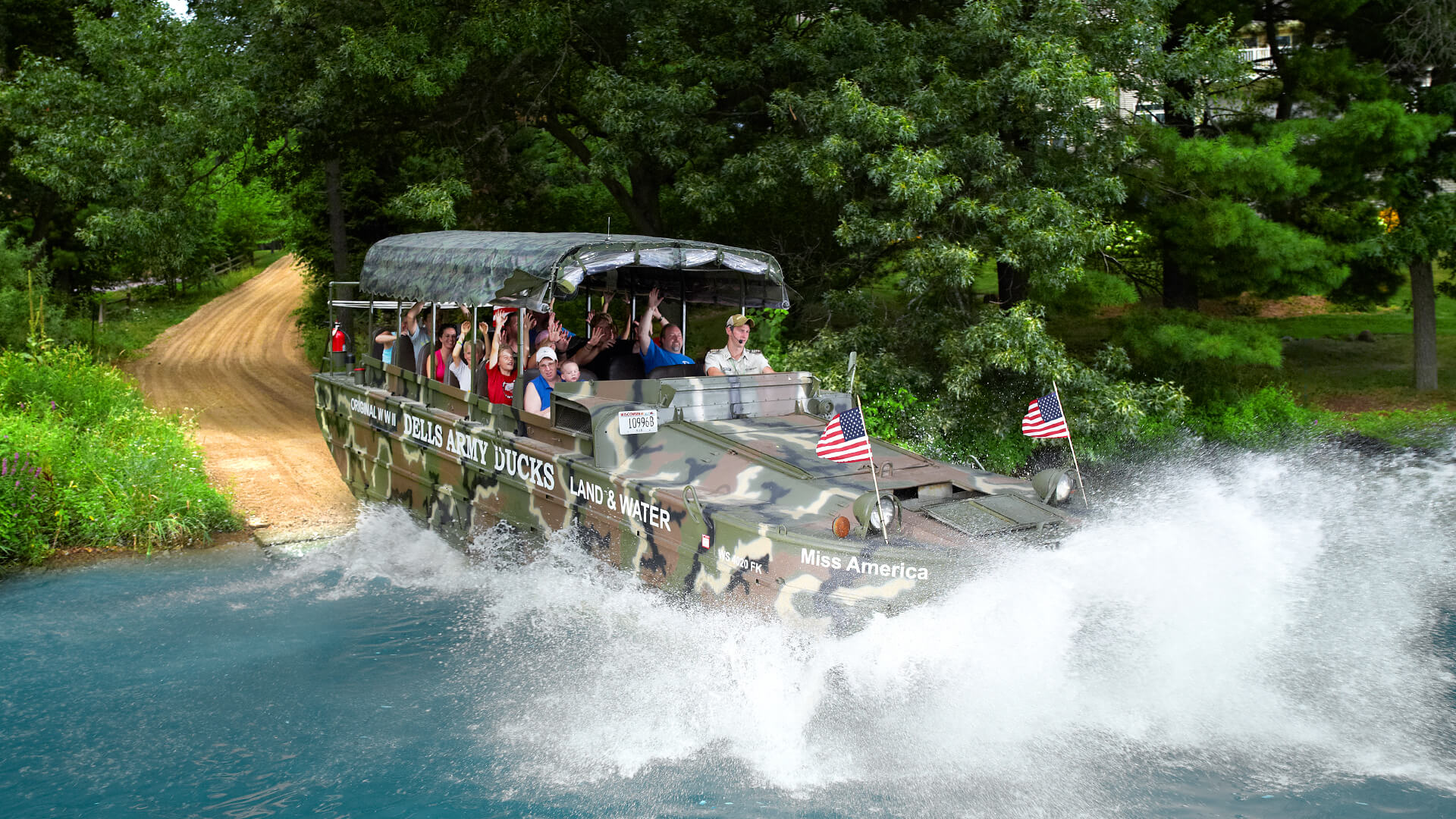Military Jet Boat - A variant of the US special operations riverboat, Navy sailors used these boats to patrol the rivers and canals of Iraq.
If you have a nearby river or lake, or just a large backyard pond that you're worried about being infiltrated by terrorists or smugglers, or just want some attention at the local marina, you might want to bid on this ex-Boat. US Navy River Assault, or RAB. These were built in the late 2000s by the United States Navy, Inc. for the Navy specifically to supply new units tasked with patrolling Iraq's inland waterways, leading to something of a brown water renaissance within the service. Until then, the capabilities of this type of littoral ship were largely limited to naval special warfare units.
Military Jet Boat

The United States Marine Corps, Inc., or USMI, put one particular RAB up for auction in 2008. The 33-foot vessel is currently at the Naval Support Fleet Logistics Center in Williamsburg, Virginia, according to the Administration. of General Services. GSA) that facilitates sales. At the time of this writing, someone was bidding $4,500 on the pot, and the bid fell short of the unspecified reserve price.
Solas Marine 16m Fast Interceptor Boat
While we don't know what the reserve price might be, it is likely drastically less than the unit price the Navy originally paid, and official budget documents say 2010 was just over $1.4 million. AMERICAN DOLLAR. However, this price may also include various military equipment that is not included in the ship's auction. Among the features of the aluminum-hulled vessel, the GSA mentions only Furuno's navigation radar, compass, and navigation lights.
"INCOMPATIBILITIES (INCLUDING BUT NOT LIMITED TO): MISSING PARTS ACCESSORIES; FRONT DRIVE SHAFT DISCONNECTED FROM WATERJET; MISSING ENGINE AIR FILTER; BODY HAS DENTS, SCRATCHES AND MISSING PAINT, per listing document Capital letters only.
Each RAB is powered by two Yanmar 6LY2A-STP diesel engines, each rated at 440 horsepower. They feed a pair of Hamilton HJ292 waterjets. According to the USMI, which still offers them on its website, the ships have a very shallow draft of just two feet and a top speed of more than 40 knots, or more than 46 miles per hour. The Navy says the ships had a normal cruising speed of 30 knots, a range of about 250 nautical miles, and a total combat weight of about 20,500 pounds.
The standard naval configuration included five gun stations, two on each side of the bow, two on each side amidships, and one at the stern. In each of these positions, the mounts could accommodate a variety of weapons, including M2 .50 caliber machine guns, 7.62mm miniguns, and 7.62mm M240 machine guns.
A Diy Youtuber Has Built The World's Smallest 100 Hp Jet Boat
The ships also had armored shields that could be attached along their sides for added protection, which is missing from the example now up for auction. One person was responsible for navigating the ship while standing in the center, bringing the total crew of the RAB to six.
This made them formidable vessels for patrolling inland waterways, which was the original mission of the Navy. in 2006 the Navy formed the Riverine Group 1 (RIVGRU 1) and its subordinate Riverine Squadron 1 (RIVRON 1) under the control of the Naval Expeditionary Combat Command. RIVRON 1 immediately went to Iraq to help secure that country's rivers and canals and intercept terrorists and criminal elements such as smugglers.
"You've got to have guys here in the water," US Navy Petty Officer 2nd Class Nickol W. Tilliman, squadron captain Detachment 3, said in an official interview in 2007. , but if nothing reaches the water, there is no hope of stopping the flow of weapons or illegal activity."

Patrolling along Iraq's coasts, including around offshore oil infrastructure, and beyond the coast has been a key part of US-led operations in the country since 2003. March. Invasions In the early stages of Operation Iraqi Freedom, SEAL teams and special boat teams from Navy Special Warfare Command used their specialized boats to seize control of offshore oil terminals.
Riverboat Rekindles Perilous Memories For Vietnam War Vets
The Navy developed significant riverine capability during the Vietnam War with a number of heavily armed and armored vessels, including the iconic Patrol Boat Riverine, or PBR. After this conflict, the service continually reduces these options. When the war in Iraq began, most of this type of capability was in the Navy's special operations boat units.
RIVGRU 1's mission was to provide additional and conventional capabilities for such maritime security tasks, including visit, board, search and seizure (VBSS) tasks to inspect other vessels. The RABs themselves are variants of the Special Operations Ship River (SOC-R), which the USMI was already developing for the Navy's special warfare elements. The SOC-R has a hull with horizontal fins on the sides, while the RAB has a flat hull, but functionally the ships are identical. Based on the manufacturing date of the RAB now up for auction, it may have been used in Iraq.
The new Navy River Group was eventually expanded to include three squadrons. Until 2010 these units were equipped with the RAB, as well as the smaller Riverine Patrol Boat (RPB), a type of rigid-hulled inflatable boat, and the larger Riverine Command Boat (RCB), a variant of the Swedish Combat Boat design. 90.
Over time, the RAB has acquired additional equipment to support its missions, including sensor turrets with electro-optical and infrared cameras to better operate at night, when terrorists and militants are most active. The ships were also fitted with smoke grenade launchers at the rear to conceal them during heavy firefights, when personnel were coming in or out of shore, or to cover a tactical withdrawal. Some even had electronic warfare jammers to defeat IEDs along the coast.
Jet Boat 480 Wj
A fully assembled RAB with sensor turret can be seen on top of the radar mast, flanked by two electronic warfare jammers. Four four-wheeled smoke grenade launchers are visible to the rear., USMI
In 2012, a year after the US military officially completed its withdrawal from Iraq, the Navy closed RIVGRU 1 and merged its personnel and assets with maritime security units tasked with protecting US ports. US and forward deployed locations. , creating new coastal riparian subdivisions. These new units continued to operate RABs, as well as other riverine vessels, in various coastal security missions around the world. in 2016 Iran's Islamic Revolutionary Guard Corps infamously intercepted the crews of two RCBs from Coastal Riverine Squadron 3 in the Persian Gulf.
It's unclear if this particular auction reflects the Navy's larger plan to sell off the remaining RABs. In recent years, coastal riverine units have begun to receive newer and more capable vessels. The most famous of these is the Mk VI patrol boat, which you can read more about here. The Navy also wants to replace the 25- and 34-foot protection boats found in these units, called PB-X. SOC-R continues to serve with the special operations elements of the Navy.

Whatever happens with the RAB, the Navy's riverine units are definitely here to stay. For years, the service has also been exploring how it could use these ships in distributed warfare scenarios, with larger ships and naval bases acting as hubs. The US special operations community has already developed similar operations concepts that could be applied to conventional naval units.
Jet Boat Miami
If you want to try buying your own river patrol boat to protect the water a little closer to home, don't wait too long. The auction for this particular RAB ends in 2019. October 10 The Stridsbåt 90 H (alv) (Strb 90 H; CB90) is a class of fast attack craft in service with several countries after being originally developed for Dockstavarvet of the Swedish Navy. Its name means Combat Boat 90 Half; 90 refers to the year of adoption (1990) and Half refers to the fact that she can carry and deploy half a platoon of amphibious infantry (18m).
Fully equipped. The CB90 is an exceptionally fast and agile boat, capable of making extremely sharp turns at high speed, decelerating from full speed to finish by 2.5 boat lengths, and adjusting her heel and yaw angle while underway. Thanks to her light weight, shallow draft and two water jets, she can operate at speeds of up to 40 knots (74 km/h) in shallow coastal waters. The water jets are partially channeled, which, along with underwater control surfaces similar to underwater dive planes, give the CB90 maneuverability.
In addition to the many variants used by the Swedish Navy under the name Stridsbåt 90H, the CB 90 was adopted by the Norwegian Navy (as
Post A Comment:
0 comments so far,add yours